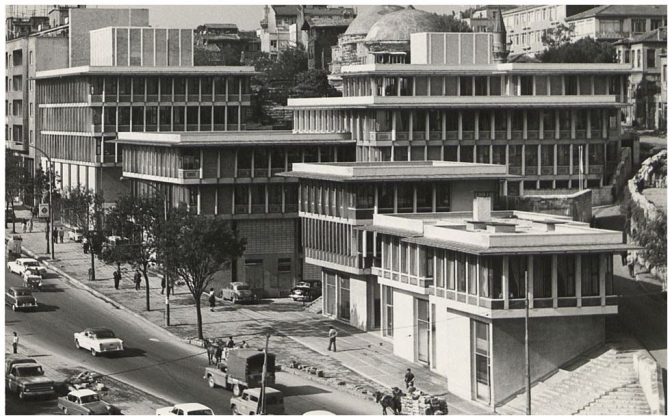Who is Sedad Hakkı Eldem, one of the pioneering names of modern Turkish architecture?
Sedad Hakkı Eldem, who took his share of the architectural tradition throughout his career and believed in the necessity of creating an architectural approach unique to Turkey by using contemporary technological elements, left his mark on Turkish modern architecture.

Sedad Hakkı Eldem is a Turkish architect, academician and writer. He was born in Istanbul in 1908. Sedad Hakkı Eldem's father is İsmail Hakkı Bey, the famous diplomat of his time, and his mother is Azize Galip Hanım, the daughter of museum curator Osman Hamdi Bey's sister. It is learned from his own writings that while he was still a high school student, he was greatly influenced by the architecture of those years and well-known architects. He was especially guided by the attitude and artistic approach of Oscar Niemeyer, the architect of the Krawell Mansion in Essen.
Sedad Hakkı Eldem completed his primary and secondary education in Geneva and Munich due to his father's duties. Eldem, who returned to his homeland at a time when political and social turmoil was gaining ground, started his architectural education at Istanbul Sanayi-i Nefise Mektebi (Mimar Sinan Fine Arts Academy) in 1924. After completing his education with honors, he went to France, Germany, and England with a three-year scholarship he received and worked with architects such as Auguste Perret, Hans Poelzig, and Hermann Jansen, where he improved himself greatly.
Sedad Hakkı Eldem (1908 in Constantinople – 7 September 1988, in Istanbul), was a Turkish architect and one of the pioneers of nationalized modern architecture in Turkey.
The architect, who loves to experience, watch, and research, returned to Turkey and worked in the office of architect Giulio Mongeri, a Turkish citizen of Italian origin, in Ankara. Sedad Hakkı Eldem opened his own office in Istanbul in 1932 started teaching at the Academy of Fine Arts, and continued his duties as a lecturer successfully until his retirement.
Concept of Architecture
Sedad Hakkı Eldem, who took his share of the architectural tradition throughout his career and believed in the necessity of creating an architectural approach unique to Turkey by using contemporary technological elements, left his mark on Turkish modern architecture. Although he opposed the traditional attitude by reflecting this architectural approach in his domestic projects, Maçka Firdevs Hanım Evi, 1934 and Yalova Thermal Hotel, 1937, over time he also acted in an effort to highlight classical Ottoman architecture against the rising nationalism movement in Europe before the war.
We can see that he is constantly changing and avoiding repeating himself, showing that he is influenced by architectural movements that have gained importance in the world, with his determination to create national architecture and build buildings in different styles. Sedat Hakkı, who stated that he would not be completely committed to any movement, chose his side by saying, "What I mean in architecture is public-facing, together with the public."
In 1934, he started the studies known as the 'National Architectural Seminar' to develop research on national architectural structures. These seminars aimed to list the civil or Anonymous Architecture products that had not been emphasized until then and to fill the gap in this field. The architect, who knows Turkish civil construction art very well, took care to have his students draw surveys of these buildings (measuring all dimensions of a building and reconstructing its plan, section, and appearance) in these seminars.
The principle of preservation of historical buildings is of great importance on the basis of Eldem's understanding of architecture. Between 1941 and 1945, he served in the Antiquities Preservation Committee, and between 1962 and 1978, in the Supreme Council of Real Estate, Antiquities and Monuments.
He represented Turkey in the International Union of Architects (UIA), which was established after World War II and held its first general meeting in 1948. He won the International Aga Khan Architecture Award with the Social Insurance Institution Zeyrek Facilities he designed in 1962. This building has an important place in the architectural history of Türkiye. Although it is a modern building built in a very historical texture, it has adapted to its surroundings and used traditional Turkish architectural practices such as horizontal roof lines, wide eaves, lined windows, and overhangs.
Among his most famous works are the Istanbul University Faculty of Arts and Sciences Building, which he designed together with architect Emin Onat, the Ayaşlı Mansion in Beylerbeyi, which has been standing since 1938, and the Hilton Hotel, which is the first international hotel of Istanbul with its historical beauty. In addition to these important works, he also made great contributions to Turkish architecture with his writings and books.
